There is a stereotype of the soccer mom-turned-photographer. I’m more of a photographer-turned-soccer mom. I was way more comfortable with shutter speeds and apertures than I was with game rules and etiquette. Which side of the pitch am I supposed to be sitting on? Gradually, through two seasons of soggy fields, muddy cleats, and getting hit by the occasional rogue ball, I learned a few things to improve my keeper-to-outtake ratio.
1. If you shoot at the moment of impact, you’re already too late.
I had thought that the optimum time to capture was when the toe collided with the ball, but in most cases, those weren’t the images that best conveyed the sense of action. Most of those shots were slightly awkward. I found that the more exciting images were often the kick back of the leg when a player was about to strike.
You could see the power of the wind-up and anticipate the ball about to go flying.
Occasionally, the follow through might make the best shot, with the leg fully extended, provided that the ball was still in the picture.
I know that many sports photographers use continuous shooting, with several frames per second, to improve their chances of capturing the critical moment. I tried it a few times, but typically, my first shot would be the best, and the rest just took extra space on the memory card. I still keep my drive mode set to continuous shooting, to keep multiple frames per second as an option, but most of the time, I just fire one frame at a time.
2. Get down low.
I spent most of each game sitting on a picnic blanket because my youngest son preferred sprawling out, rather than being confined to a chair. As it turned out, this was the best vantage point to take pictures, as it made the players look slightly larger than life.
Compare this to a picture taken of a player of similar height, taken while I was standing up.
Because this looks down on the player, he looks a little smaller and more vulnerable. The difference is even more dramatic if the players are close to you and you are shooting with a wider angle lens.
3. Use manual mode or aperture priority.
Many people automatically associate sports photography with shutter speed priority, thinking that you should pick a fast shutter speed and let your camera decide the rest. The danger is that if the light is low, you will underexpose, and if the light is bright, your aperture will narrow, bringing more into focus than you would choose.
In youth soccer, there are often many distractions in the background, such as cars and buildings. Also, the players may tend to cluster together, and this may make it more difficult to draw attention to your subject. For this reason, I choose my widest aperture, although some people may choose a slightly narrower aperture to give them some latitude on the focus. I will shoot in manual on an overcast or sunny day, but if it the sun is moving in and out of clouds, or it is near sunset with the light rapidly changing, then I will use aperture priority.
Of course, I keep an eye on my shutter speed, making sure it doesn’t drop lower than I want it, but there is typically no difference in appearance between an image I shot at 1/1000 second and 1/2500 second.
4. You don’t need to freeze the action in every single shot.
A little blur of the ball can actually add a little of the excitement of the moment. This was a shutter speed of 1/160 second, which is traditionally very slow for a sport like soccer (most of the time I was using speeds of 1/1000 second or higher), but it worked well for this shot.
5. Back-button focusing with continuous focusing is the way to go.
People complain that back-button focusing slows them down, because it’s an extra button to push, and worry that continuous focus will refocus on anyone that steps between the subject and the camera. It takes practice, but with back-button focusing, you can choose whether your focus behaves more like one-shot focus or continuous focus with how long you press the back button. Pulsing the back button briefly as the subject moves across the field will act like one-shot focus. You can press the shutter button at any time in between, and you won’t lose the picture as the camera struggles to lock focus.
When the subject moves toward you, switch from little pulses to holding the back button down. Then you take advantage of the continuous focus when it can do the most good, as the camera to subject distance is changing rapidly, and it’s not too hard to keep the autofocus point over the subject.
6. Conflict is good.
The interaction between players often makes a more compelling image than a lone player breaking away with the ball.
7. Watch for the post-goal celebration.
It may be subtle, and it may be delayed, but it almost always comes, so follow the player and hope the referee doesn’t stand in front of you when it happens.
8. Get to know your players.
The better you learn how each one handles the ball, the more likely you are to be able to predict their moves. As I mentioned before, photographing soccer is often about anticipating the shot just before the critical moment, rather than reacting to it, so being familiar with the team really helps.
Even though the team didn’t have a winning season in the numeric sense, they were a great group of kids who worked hard, made some spectacular plays, and conducted themselves with great sportsmanship. Although we could never settle whether to call their uniforms green or yellow, or decide on a name (unless you count “The Highlighters”) we were really proud of our boys and the way they handled the season.
Well done, guys!

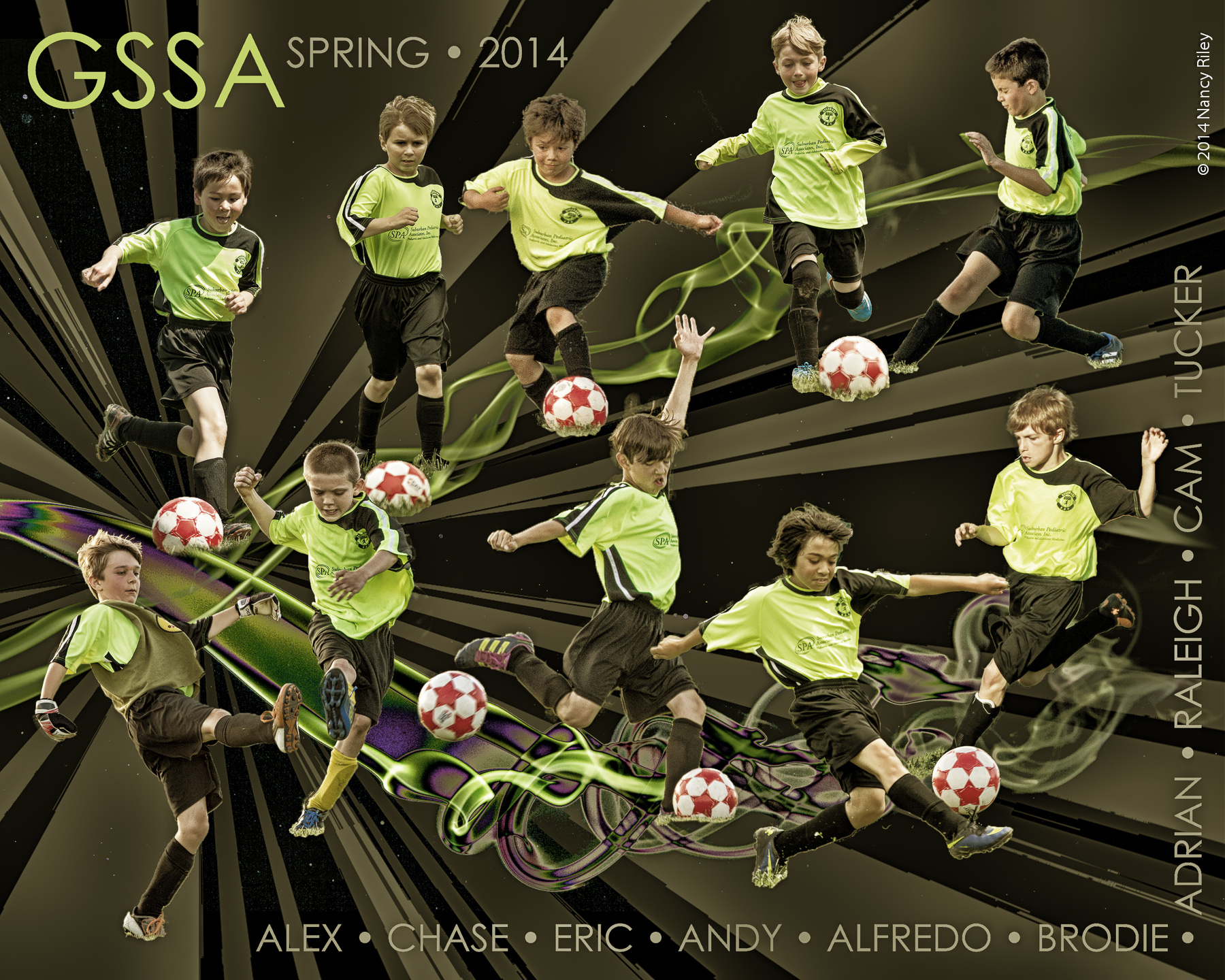
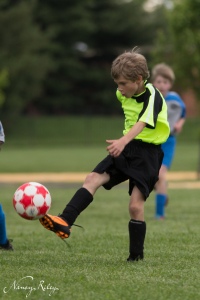
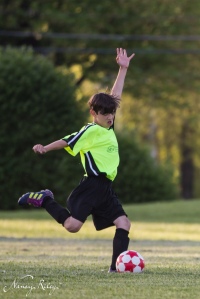

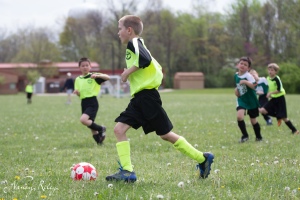
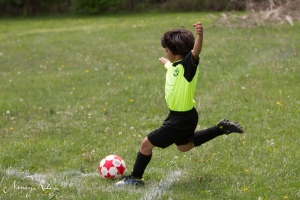
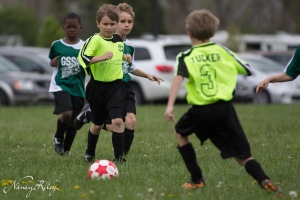
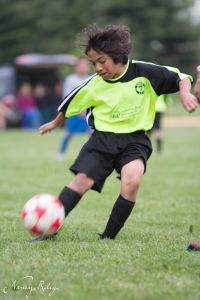
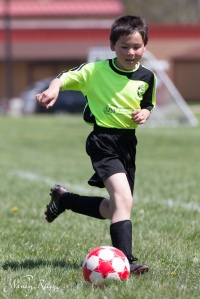
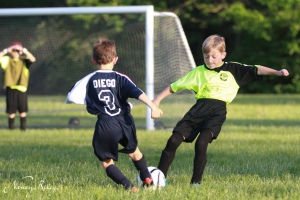
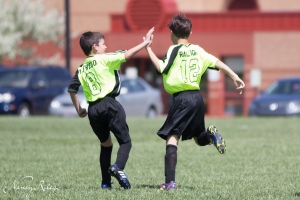
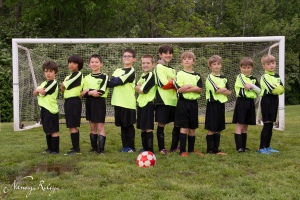








Great post. I love the summation of the season.